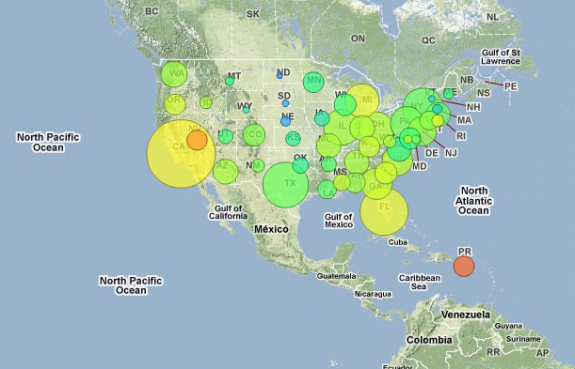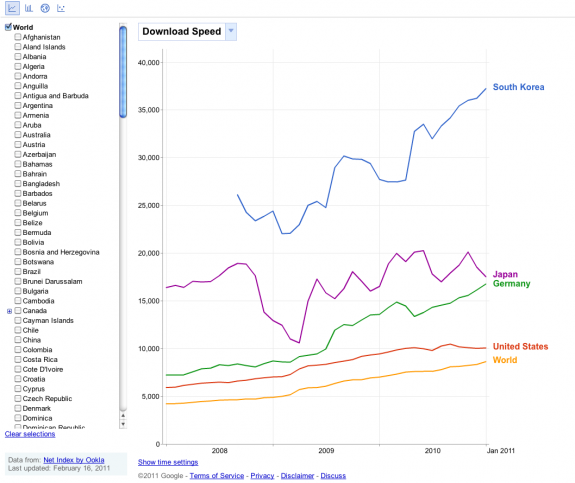PAUL KRUGMAN'S columns tend so often toward scathing criticism of Republicans that it's easy to discount the outrage and dismiss it. It would be a shame if that's the reaction to his writing today, which couldn't be more on point. To wit:
The whole budget debate, then, is a sham. House Republicans, in particular, are literally stealing food from the mouths of babes — nutritional aid to pregnant women and very young children is one of the items on their cutting block — so they can pose, falsely, as deficit hawks.
American government spending has grown across a range of categories—certainly, defence spending has increased as a share of the economy—but the big, looming problem for American solvency is health spending. The Congressional Budget Office's analyses could not be more clear about this. The long-term growth in spending, the stuff that pushes up spending as a share of the economy to unprecedented levels, the stuff that raises deficits and debt as a share of the economy to eye-popping percentages, is in the health portion of the budget. It is, overwhelmingly, Medicare and Medicaid. If members of Congress are unaware of this fact, then they have not picked up a CBO budget analysis, which suggests that they're woefully uninformed on a crucial issue and should not be making any impactful decisions about government outlays.
But of course, legislators are making impactful decisions about government outlays. They're hacking away at non-defence discretionary spending with reckless abandon. A colleague of mine worked up some interesting numbers on non-defence discretionary spending the other day, and I found the data very revealing. Have a look:
 |
Here's a fun fact: non-defence discretionary spending was equal to 3.6% of GDP in 1963. It was also equal to 3.6% of GDP in 2008. It is not behind the increase in government spending as a share of the economy over that time period. It has not made government any less affordable. It is not projected to rise substantially in the future. This is not to suggest that there is no waste in this portion of the government. Without question, there is. This portion of the budget should be subject to close scrutiny, to reform, and perhaps to some cuts (though whether net cuts are justified is far from clear). To pretend that one can balance the budget with cuts focused on this portion of the budget, or that major cuts to this portion of the budget are in any way desirable, is madness. And yet this is what Republicans are doing. Mr Krugman notes that cuts so far have affected programmes that support food budgets of poor Americans. I've pointed out that proposed cuts would reduce spending on job re-training, despite the country's serious long-term unemployment problem. There's more besides:
With tensions rising, House Republicans pushed through a third long night, hoping to win passage late Friday of more than $60 billion in immediate spending cuts that would severely affect agencies in the second half of this fiscal year.
The leadership put the brakes on deep additional cuts, but a school reform program important to President Barack Obama would be decimated by a $336 million reallocation of funds approved by 249-179. The National Endowment of the Arts narrowly lost an additional $22.5 million. And in a blow to the president, Democrats failed to restore $131 million for the Securities and Exchange Commission, facing new responsibilities under Wall Street reforms enacted in the last Congress.
That's right: Democrats were unable to undo cuts to the budget of the commission charged with overseeing behaviour in the financial sector, the responsibilities of which were just overhauled in response to a financial meltdown that very nearly produced an economic depression. And if Republicans are unable to make these cuts law, they're prepared to shut down the government over it.
This is not responsible policymaking. This is not fiscal discipline. This is not a careful, cost-benefit-based analysis of the government's spending priorities. This is a joke. And it's a cruel one.
President Obama isn't out there leading the charge to address long-term fiscal issues in a responsible way, it's true. His budget cuts also focus on non-defence, discretionary spending. The lack of leadership there is disappointing. But his budget doesn't, for the most part, gut valuable programmes in the name of fiscal responsibility. And they absolutely don't excuse this reckless, dangerous behaviour on the part of Congressional Republicans.












